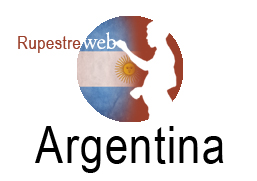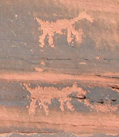 Banda Florida. An overview of a rock art site in La Rioja, Argentina Banda Florida. An overview of a rock art site in La Rioja, Argentina
Maarten van Hoek rockart@home.nl
INTRODUCTION
Rock art is often found at enchanting places and many of the sites in the Andes of South America are no exception. Also the mountainous west of Argentina has beautiful landscapes where often enormous collections of rock art sites occur. Well known are the fascinating rock art sites of Antofagasta de la Sierra, Laguna Blanca, La Tunita and Inca Cueva (Podestá et al 2005). Although the less visited Province of La Rioja has many rock art sites like Paluque or Palancho and Los Colorados, both ‘near’ Chilecito, many archaeological sites in this beautiful area are largely unrecorded. One of the rock art sites that deserves a more detailed description is Banda Florida. For easy reference several rock art sites in La Rioja that are of interest in this work have been assigned a three-letter code by me. Thus, the rock art panels at Banda Florida have been labelled ‘BAF’. As some of the eight sites at Banda Florida have petroglyphs on boulders as well as on outcrop, I decided to number each concentration of rock art panels - a site - BAF-001 to BAF-008, and assigned an individual capital letter to each separate rock (boulder or outcrop). However, some boulders have multiple panels that bear petroglyphs and these have been indicated with lower case characters that indicate the direction the face in. Thus, BAF-004Bsw refers to the southwest facing Panel of Boulder ‘B’ at Site ‘4’ at Banda Florida (BAF).
Location
Banda Florida is the name of a small village NW of the town of Villa Unión (Department of Felipe Varela; Province of La Rioja; Argentina). It is located about 300 km inland from the Pacific Ocean, but east of the Continental Divide. Banda Florida is also the name of a group of rock art sites (locally called La Isla) at the extreme northern tip of a low mountain range west of Villa Unión called Cerro Punta Colorada (Figure 1). This colourful mountain ridge stretches SSW-NNE for about 20 km. From the highest point at 1924 m O.D. this ridge of tilted sandstone layers (and older rocks further west) is reduced to a row of isolated, low hills and/or high rocky outcrops at its very NE end. At this point the Río Bermejo breaks through a few of those rocky outcrops. The floodplain of the Bermejo River is at 1165 m O.D. at this point.
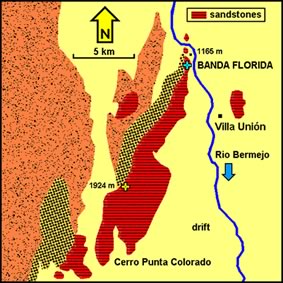
Figure 1: Location of the Banda Florida petroglyph site. La Rioja, Argentina.
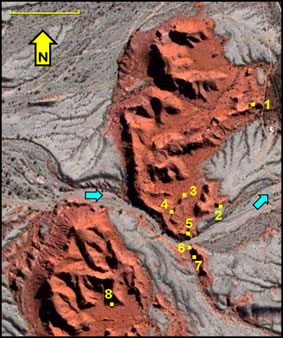
Figure 2: Google Earth map showing the location of the eight rock art
sites surveyed on this occasion. Scale is 250 m.
About 600 m west of the Río Bermejo and 5.2 km NNW from the centre of the Plaza San Martín in Villa Unión are two rugged rock outcrop areas crossed by the dry river system (Quebrada) of the Río el Suri (marked with blue arrows in Figure 2). The tops of the individual hillocks vary between 1175 m and 1234 m. The petroglyphs of Banda Florida are found on both sides of the Río el Suri. What is most evident from the Google Earth photos is the deep red colour of the sandstones that build Cerro Punta Colorada and thus the Banda Florida complex. This attractive colour of the rock strongly contrasts with the scarce green vegetation, the deep blue sky and the snow capped mountains. Views from Banda Florida are most impressive. Looking east across the extensive plains of the valley of the river Bermejo the imposing peaks of the Famatina mountain range (highest point at Cerro General Manuel Belgrano at 6250 m) are visible 50 km to the NE (Figure 3). To the west the snow capped peaks of the high Andes are visible.
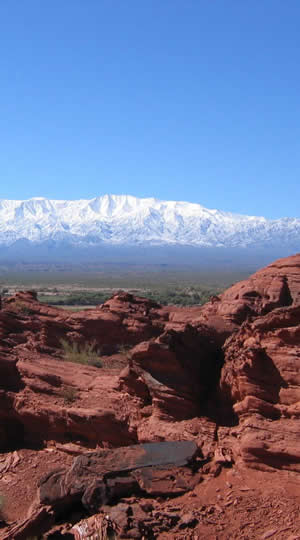
Figure 3: Looking NE across Site BAF-004 towards the snow covered Famatina mountain range.
Climate and vegetation
The Bermejo Basin is sheltered to the east by the Famatina mountain range and to the north and west by the high Andes. As a consequence precipitation is less than 200 millimetres per year and the area may be regarded as a typical semi-desert with a humidity that is usually under 20 percent. However, occasional heavy showers or prolonged rainfall occur in the area (mainly coming from more exposed southern directions) as well as thick coverings of snow, especially on the surrounding mountains. The melting snow comprises a further source of water in dry times. Although many riverbeds are indeed dry most of the year, there is much evidence of running water in those dry valleys. Because of the scarce precipitation the vegetation only covers between 10 and 20 percent of the surface and is found mainly concentrated in depressions and river valleys. It largely consists of xerophytes; plants which are able to survive in an environment with little available water or moisture, like shrubs, cacti, and specific desert adapted trees. The Banda Florida area mainly has medium sized shrubs (some with thick thorns) and some small trees and patches of spiny grasses. The area has no cacti. The area is easy to walk as shrubs grow wide apart.
Geology
Banda Florida is part of the sedimentary depression known as the Bermejo Basin, which is also called the Ischigualasto-Villa Unión Triassic Basin. The basin originated about 20 million years ago and since then actively accumulated drift material from the surrounding mountain ranges. As a consequence lower parts of the mountain ridges slowly become covered with drift material leaving only the eroded tops exposed. This is evident in the Banda Florida area where the deep red colour of the still exposed sandstone outcrops strongly contrasts with the green-grey drift material that surrounds those red hillocks. The loose drift material around Banda Florida has intermittently been transported by the Río de Suri drainage from a higher mountain ridge to the west and by the Río Bermejo from the north.
The solid sedimentary formations of this part of the Bermejo Basin consist of continental sediments deposited by rivers, lakes and swamps during the Triassic Period. Six geologic formations make up the Triassic basin, the earliest of which are the Talampaya and Tarjados Formations that are composed of red sandstones. These early sandstones also form the rocks at Banda Florida. The outcrops at Banda Florida actually consist of numerous layers of sandstone. These sediments initially were deposited in a horizontal position in a swamp or lake during the early Triassic Period, about 240 millions of years ago. Much later, during the Tertiary Period, continental drift caused the Nasca Plate (which forms the bottom of the Pacific Ocean west of South America) to collide with the South American continent. This orogenic process lifted and still lifts the Andes Mountains to enormous heights, but simultaneously forced the horizontally orientated sandstone layers in the Bermejo Basin to be tilted. Today, the angle of the tilted sandstone layers at Banda Florida is about 25 degrees (Figure 4). The gentle dip-slopes are oriented towards the ESE, while the steep or even perpendicular scarp slopes are oriented to the WNW which indicates that the pressure came from the latter direction.
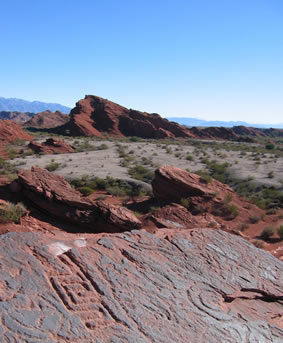
Figure 4: Looking NNW across Panel BAF-001C
showing the tilted nature of the sandstone layers and the scarce vegetation.
Because of the layered nature the sandstones easily flake while thick plates of more resistant rock sometimes project dangerously over the scarp-slopes. Due to natural factors (weathering, erosion, gravitation and earthquakes) parts of those plates break off and tumble down the slopes. For that reason, many larger and smaller boulders and numerous clasts are found in the area. A disadvantage of the layered structure is that outcrop parts may easily be broken off by vandals stealing ancient rock art. It is possible that several images have disappeared this way; especially parts of Panel BAF-005 seem to be missing.
Many parts of the exposed sandstones at Banda Florida have developed a dark layer of patina, especially the uppermost layers on top of the dip slopes that are frequently exposed to direct and intense sunlight. This patina, also called desert varnish, is purple, blue, grey or black (depending on lighting conditions) and in some cases reflects the sunlight like a mirror, an effect which can be seen from miles away. There clearly has been a strong preference to decorate those patinated surfaces, although sometimes petroglyphs also appear on unpatinated parts of the surface. There is however one distinct exception. Panel A of Site BAF- 006 is located about one metre above the dry riverbed of the Río de Suri and as a consequence the rock has been heavily eroded by water seasonally running through the rather narrow opening between sites BAF-005 and BAF-006. For that reason Panel BAF-006A has a smooth surface without sharp edges and hardly has any flaked surfaces. Also, it has developed hardly any patina. Although there are many more such smooth, eroded rock surfaces in the dry valley of the Río de Suri, only Panel BAF-006A has petroglyphs.
Associated archaeology
As far as I know rock art only exists at this extreme NE tip of Cerro Punta Colorada, although the whole mountain ridge is composed of the same red sandstones. Perhaps the proximity of the river Bermejo, or rather the confluence of a dry river and a river that ‘always’ carries water, explains the presence of rock art at Banda Florida. My wife and I did not notice any other archaeological remains in the Banda Florida area.
However, in the Bermejo Basin more rock art sites have been reported. Only 8.5 km ESE of Banda Florida and on the eastern side of the river is Anchumbil (ANC). This ‘gorge’ous site (at 1250 m) has a concentration of at least eight panels with rock paintings, one of which is locally known as ‘La familia de la Cueva’, because it depicts two large anthropomorphs and three smaller individuals. A ninth, heavily vandalised panel bears faint petroglyphs of uncertain age.
About 32 NNE of Banda Florida and roughly at 1525 m is the Cerro el Toro site (TOR) also known as Rincón del Toro. This remote site (some panels are still vandalised though) proved to have been scientifically surveyed because of the extensive habitation site - a pucará - that occupies the rough and steep slope of the hill (Callegari 2001). The pucará comprises many roughly circular structures - now with only low cobblestone walls remaining - located at different levels. Strewn all over the steep slope are many small to very large black-grey coloured boulders. In 2010 we recorded petroglyphs on at least 14 boulders and at least one boulder with a shallow mortar. Ceramic remains once found at this site are said to be related to the Aguada Culture and also the imagery has tentatively been ascribed by Callegari to the Aguada culture (2001). It is not certain however if the Aguada people are also responsible for the rock art.
Other rock art sites in the Bermejo Basin are much further distant. About 70 km SE of Banda Florida is Talampaya National Park (TAL) with at least 32 rock art sites (as far as I know not fully inventoried or published) and still further south is Ischigualasto with at least two rock art sites, Piedra Pintada and Agua de la Peña (Posestá & Rolandi 2001).
Outside the Bermejo Basin and at the eastern side of the Famatina mountain range is Parque Diaguita (DIA), about 102 km NE of Banda Florida. Located on an extensive plateau are at least 60 smooth and shinny black-blue andesite boulders with petroglyphs. Unfortunately, locals informed me that several boulders have been stolen from this interesting site. Further south in the Chilecito Valley are the rock art sites of Palancho (PLQ), Los Colorados (Pía Falchi 2008) and El Chiflón; all three sandstone sites. More than 240 km to the west from Banda Florida and across the Continental Divide are many petroglyph sites in Chile.
Although no monumental architectural art is known from this area, two archaeological sites are worth mentioning. About 58 km north of Banda Florida and just west of the village of Vinchina are circular geoglyphs made of white, red and blue cobbles. Because of their distinctive shape and colours they are known as Rosas de Piedra or Estrellas Diaguitas, although it is uncertain whether the Diaguita people were indeed the manufacturers of those geoglyphs. These structures are so large that three structures are visible with Google Earth. Another circular structure - of mono-coloured cobles this time - is found 77 km to the ENE and just north of Chilecito. It is also know as an Estrella Diaguita or El Calendario Indigena. The factual use of these geoglyphs is unknown.
In addition to the rock art and geoglyphs, pucarás and cave and rock overhang habitation sites have been discovered in the area as well as burial sites, ceramics and grinding stones (mortars in small and large boulders and in outcrops), campgrounds, and tool-making areas, all dating from about 600 B.C. to the Indian cultures that were present at the time of the Spanish conquest.
DESCRIPTION OF THE ROCK ART AT BANDA FLORIDA
All petroglyphs at Banda Florida appear on sandstone. Two factors make it difficult to classify the imagery at Banda Florida. First of all there is the eroded and flaked nature of many of the panels. Despite the fact that many panels are flat, most of them are rough due to numerous small irregularities and larger areas of exfoliation as well as much differing colours due to uneven patination. Adding to the visual confusion is the nature of many petroglyphs.
Many markings are ‘randomly’ executed at varying depths and several instances of superimposition occur. As a consequence it is hard to discern specific patterns or figurative images. Yet it is possible to classify much of the art in terms of geometric figures, anthropomorphic and zoomorphic figures.
Geometric designs include simple straight lines, zigzag lines, curved lines, various rectangular forms, radiating sun figures, spirals, S-shaped lines, concentric circles, simple and more complex crosses and some complex figures that cannot easily be classified.
The repertoire of anthropomorphic figures at Banda Florida only includes a few isolated, static figures. Most of these anthropomorphs are simple renderings, but some figures seem to wear a headgear of some kind. Zoomorphs are represented by a few species, especially the camelid (guanaco?) and a few birds. All zoomorphs are depicted in a rather static position and in isolation. Only the two outlined zoomorphs on Panel BAF-006A could represent an adult and a young, but this is not at all certain. Two (or three?) depictions of a person riding a zoomorph (on Panels BAF-003A and BAF-004Bsw) possibly represent the only instances of interaction between humans and zoomorphs. Other scenes, like a hunt or a cattle-drove seem to be absent. Also the rows of camelids that are so typical for Andean rock art seem to be missing at Banda Florida. Surprisingly, images of ‘ostrich’ and ‘puma’ tracks could not be recognised at Banda Florida. However, human footprints and handprints do occasionally occur at Banda Florida. The handprints on Panel BAF-008 are exceptional, however.
The petroglyphs at Banda Florida show differences in manufacture. Most of the images are pecked and individual peck-marks are often clearly visible. There are three major types of pecking: coarse (cP), medium (mP) and fine pecking (fP). In a number of cases lines and grooves have been incised with a sharp object. The depth of the petroglyph grooves also varies considerably. Some grooves are relatively deep (dD), the majority have an average depth (aD), while some are extremely superficial (sD).
Site BAF-001
Site 1 (Figure 5) is located at the eastern edge of a high sandstone ridge and is closest to the Bermejo River. A track runs immediately east of the rocky hillock and from that track one has to climb the steep slope of outcrop rock to the top. On the uppermost level of the ridge is a row of four outcrop panels that all project dangerously over the escarpment. They all slope about 25 degrees to the ESE. Because of the high position there are magnificent views all around, including the Bermejo River and its basin and snow capped mountains of the Andes to the west and the Famatina Mountains to the east.
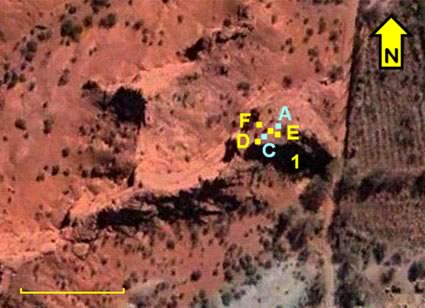
Figure 5: Location of the individual panels at site BAF-001. Based on Google Earth. Scale is 50 m.
Panel BAF-001A
The first panel of the row of four is smooth but much flaked. Patination is variable. There are many petroglyphs but their exact patterns are hard to distinguish also because the surface has been damaged by exfoliation. Some images are extremely faint (sD) like the rectangle near the west end of the panel. It encloses a row of three internal X-grooves. A similar, faint rectangle is found near the NE edge of the panel. There are many meandering and straight grooves (dD and aD), ovals, circles, spirals and unclassifiable patterns. One set of grooves (sD) may represent a concentric double-spiral. In one case a large diamond-shape groove (enclosing four or five small dots) is connected to a smaller one which has two small dots (eyes?). There are two match-stick zoomorphs (possibly camelids); one with four legs, the other with three. On a very smooth part are two small tracks (?) of unidentified zoomorphs.
Panel BAF-001B
A couple of metres to the west is Panel B. It bears a similar collection of petroglyphs. On its flat but irregular surface are a star-shape (aD) with forked rays, a concentric (14 cm diameter) comet-shape (dD), a circle, a straight groove (dD) connected to a rectangle (sD) with four or five parallel grooves, and several meandering and straight grooves and other unidentifiable markings. One of the deeper grooves (dD) runs from the top of the panel and ends near the comet-shape at the centre of the panel where it superimposes a small (16 cm) outlined, nearequal- armed cross (aD) (Figure 6). Near the west edge of this panel is a second, better preserved outlined cross of which two arms are slightly curved. A third example is found near the top of the panel. Near the east edge is a large spiral (aD) with a short (sD) abraded groove next to it. There is another, similar abraded groove on this panel. These grooves may be a tool sharpening grooves. Tool sharpening grooves also appear on Panels PLQ-010 and PLQ-019 at Palancho and on isolated cobble stones at El Chiflón. A curved row of five small dots neat the centre of the panel may represent the remains of a human footprint, while another human footprint is much clearer. There are possibly four small zoomorphs (one 10 cm). One zoomorph (with possibly five legs) has been placed in a rectangular area that has been superficially recessed. Exceptional is a closely packed set of four small spirals (dD) grouped into a square formation.
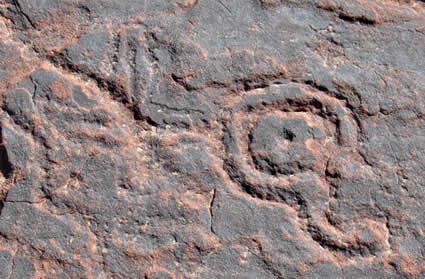
Figure 6: Detail of Panel BAF-001B showing the ‘comet’ (14 cm diameter) and the outlined crossed
superimposed by part of the long deep groove. Note the difference in depth of the grooves.
Panel BAF-001C
Almost touching Panel B is Panel C. Most petroglyphs appear on the uppermost, patinated part. Unfortunately, this panel is heavily damaged by natural factors (large holes have destroyed some petroglyphs) but especially the un-patinated lower part is vandalised by Post-Columbian visitors. Besides many random scratches, names and initials there is one complex, incised shield-like design and a small rectangular area where part of the rock has been removed. Of doubtful character (but certainly not contemporary with the petroglyphs) are the images of three outlined zoomorphs depicted in ‘twisted perspective’ (profile body; frontal head); all facing to the east. One zoomorph has been pecked (sD), while the two larger zoomorphs have been incised and are phallic (and possibly of a later date). They all have been executed in a rather primitive way and may have been made by local people for fertility reasons rather than by visitors.
The petroglyphs are similar to those on Panel BAF-001A and B. Most of the upper part is covered by a jumble of meandering, curved or straight grooves (aD - mP and cP), most of which seem to form random patterns or are simply unidentifiable. Several grooves superimpose other figures. However, a number of designs stand out. Partially damaged is a set of three concentric circles with central dot (dD). Nearby are a rectangular formation of angular spirals (dD) (Figure 4) and a set of two parallel serpentine grooves (dD) - a ‘snake’? There are at least two match-stick zoomorphs depicted in profile; probably camelids. Near the recently removed rectangle are a spiral (sD); one fully pecked footprint and four much weathered outlined crosses. A fifth, larger, outlined cross is found just east of this group.
Panel BAF-001D
The uppermost of the row of four panels dangerously projects into the air and especially its patinated overhanging part has been decorated. Also this panel is flat but very irregular and fractured. Vandalism is limited to a few names and initials. Two long grooves (cP and dD) run indiscriminately across the panel, superimposing several figures. As a consequence of all these issues it is hard to discern patterns. However, there are at least two match-stick, profile zoomorphs (probably camelids) (Figure 7) and a short straight groove with six shorter grooves at each side (possibly a centipede). Interesting are several straight grooves with a spiral at each end (aD and dD) (Figure 8). There are at least three much weathered outlined crosses (mD and sD) and two sets of four concentric circles (mD and aD). A set of two concentric circles (dD) has a meandering double-groove attached and looks like a ‘comet’. There are more sets of two concentric circles ‘associated’ with groove patterns and some (isolated) cupules. One set of parallel serpentine grooves looks like a ‘snake’. A group of six parallel straight grooves is found close together (Figure 9). Two grooves are simple straight lines. One groove has a ‘bird-track-design’ at both ends. A longer groove has a ‘bird-track-design’ at the lower end and a cupule and a short straight line at the top end. The fifth groove is similar to the third groove but instead of a ‘bird-track-design’ at the top end it seems to have two arms, each with three digits. It could represent an anthropomorph; an inverted U-shape could represent the head. The sixth groove is almost identical to the third groove.
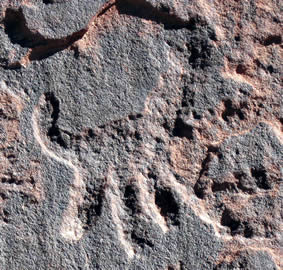
Figure 7: Detail of Panel BAF-001D showing a simple zoomorph (10 cm), probably a camelid.
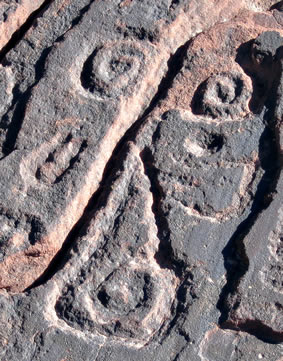
Figure 8: Detail of Panel BAF-001D showing a couple of the straight
grooves with simple spirals at the ends. Length of the biggest set is 20 cm.
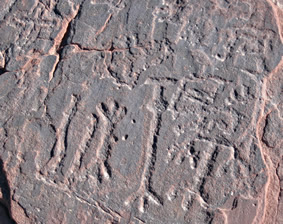
Figure 9: Detail of Panel BAF-001D showing the group of six grooves (one possibly depicting an
anthropomorph). Length of the fourth groove from the left is 33 cm.
Notice the outlined cross in the upper left-hand corner.
Panel BAF-001E
A short distance ESE of Panel A is a much flaked bit of the same outcrop on which a rough and deeply patinated part bears a deep meandering groove (enclosing two cupules) and a large and deep oval depression possibly surrounded by a much shallower groove. Peck-marks are not visible and the figure may (partially) be natural or very much weathered.
Panel BAF-001F
On a lower level below Panel A and actually on the ‘path’ from the track to the top is a smooth but pitted part of the outcrop which bears at least three sets of grooves. One set seems to be an oval with a curved groove attached. The other two, smaller, sets may represent unfinished camelids or just simple rake figures.
Site BAF-002
At the foot of a small hillock and about 400 m SSW of Site 1 (Figure 10) is a large boulder with a smooth, patinated upper surface that gently slopes to the SE. Clearly visible are three sets of grooves (dD) two of which may have been simple equal-armed crosses, and three further sets of grooves (aD) one of which is U-shaped, while the largest set might represent the rough image of a ‘fully’ pecked bird (dD). There are also a few small areas with peckmarks (Figure 11).
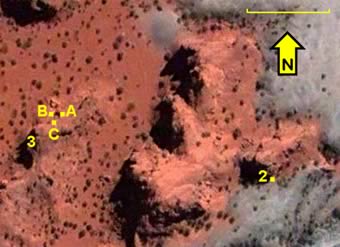
Figure 10: Location of the individual panels at sites BAF-002 and 3. Based on Google Earth. Scale is 50 m.
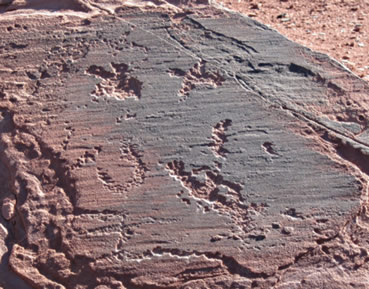
Figure 11: The petroglyphs on Panel BAF-002. Diameter of the cross is 8 cm.
Site BAF-003
At the foot of a low, north facing cliff roughly 130 WNW of Site 2 is a group of boulders, apparently tumbled down from the cliff (Figure 10). At least two of the boulders and the cliff itself bear petroglyphs.
Panel BAF-003A
The flat upper surface of this boulder gently slopes to the NE. It is damaged by exfoliation and graffiti (scratching, initials and a heart-shape). The petroglyphs (all cP - dD to aD) (Figure 12) comprise a large ladder-design; a rectangle with median line; a match-stick profile zoomorph; a second zoomorph with possibly a ‘rider’ on its back (Figure 13); a match-stick frontal anthropomorph and a stepped, pyramid-shaped design.
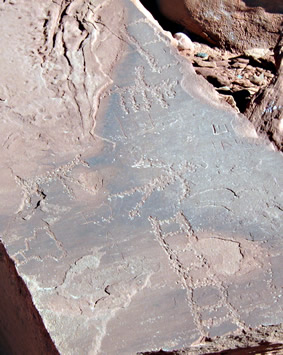
Figure 12: The petroglyphs on Panel BAF-003A. Height of the ‘ladder’ is 43 cm.
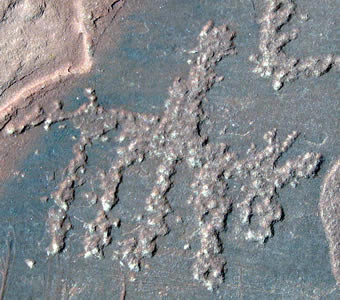
Figure 13: Detail of Panel BAF-003A showing the ‘rider’. Length of the zoomorph is 20 cm.
Panel BAF-003B
A short distance to the west is boulder B. On its very rough, vertical east facing side are three sets of pecked grooves forming no specific pattern. No petroglyphs were spotted on the smooth, more suitable, north facing upper surface of the boulder.
Panel BAF-003C
The low, north facing vertical outcrop cliff immediately south of boulder B has some patinated areas with a cluster of petroglyphs. Most of the designs are extremely faint and are only recognisable when viewed with oblique lighting. There are at least two small ‘rectangular/ovals’ forming a sort of figure-of-8, one distinct spiral and a much weathered set of grooves that may include one or more spirals. Above the set of grooves is an irregular Mshaped groove (all fP and sD). Below the set of grooves is a small match-stick zoomorph depicted in profile, probably a camelid. East of the set of grooves are at least five small areas with short grooves and some doubtful markings. There may be more markings on this cliff.
Site BAF-004
This is the most impressive site at Banda Florida. Three large boulders are found in a depression at the foot of a perpendicular scarp about 80 m SW of Site 3 (Figure 14). They most probably have fallen down from the top of the hillock. Although in a secluded position, the rather high elevation offers magnificent views NE towards the Famatina Mountains (Figure 3). Boulders A and B each have two panels with petroglyphs; Boulder C only one panel.
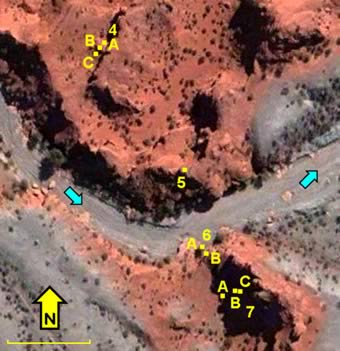
Figure 14: Location of the individual panels at sites BAF-004 to 7. Based on Google Earth. Scale is 50 m.
Panel BAF-004Ane
Boulder A is almost completely covered by Boulder B. However, its smooth and flat, northeast facing panel is fully exposed, but still has only two petroglyphs. One is a straight groove and the other depicts an H-shaped design (Figure 15). They both seem to be of a manufacture different to the ‘standard’ petroglyphs at Banda Florida. The type of pecking is different; more superficial and rougher. They also are less well patinated.
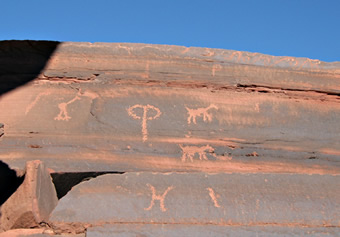
Figure 15: The petroglyphs on Panels BAF-004Ane (lower part)
and Panel BAF-004Bne. Height of the ‘bird’ is 15 cm.
Panel BAF-004Asw
The smooth and southwest facing panel is almost completely covered by Boulder B. A small part is accessible and features a very irregular ‘circle’ with a curved groove attached (cP and dD). The whole set has crudely been executed in the ‘standard’ style. There are a few areas of rough pecking near this figure.
Panel BAF-004B-ne
Also the smooth and flat, northeast facing panel of Boulder B is fully exposed (Figure 15). It bears two rows of petroglyphs. The lower row comprises (from left to right) an amorphous area of pecking, a small, slightly curved groove; a fully pecked bird petroglyph (possibly a suri or Andean ostrich) with three toes at each leg; a vertical groove with two curved ‘arms’ (a ‘double-P’) and two fully pecked zoomorphs each with four legs and apparently male. The lowermost zoomorph is special as it seems to emanate a ‘cloud’ in front of its head; exhalation or sound? The upper row near the top end of the panel shows (all mP and aD) a short groove, a P-shaped groove, an inverted U-shape and a row of three recumbent S-shapes of which the central example joins the outer two. Again, especially the ‘P’ and the ‘double-P’ seem to be of a manufacture different to the ‘standard’ petroglyphs at Banda Florida. Also the zoomorphs and bird may be of a different manufacture.
Panel BAF-004B-sw
The SW facing panel of Boulder B bears the richest and most interesting collection of petroglyphs of Banda Florida (Figure 16). On the extremely smooth and deeply patinated south part of the panel of this enormous boulder is a large group of perfectly executed petroglyphs. The central part - still flat - shows a mixture of patinated and un-patinated areas and a small number of less well visible designs. The northern part is heavily weathered and eroded and on its rough and irregular surface no petroglyphs could be detected. Most petroglyphs show the same degree of patination as the surrounding rock surface (whether on patinated or un-patinated areas). However, some of the images clearly are more recent as they are hardly patinated and show the red colour of the original sandstone against the deep blueblack patina of the rock surface. It is also possible that (parts) of those un-patinated figures have been re-pecked. However, an un-patinated zigzag groove seems to superimpose deeply patinated grooves, indicating a renewed use of this sacred site.
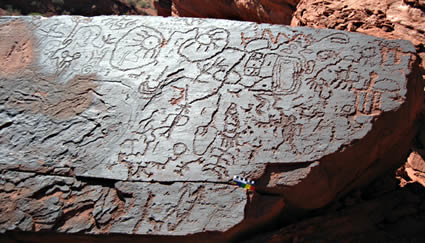
Figure 16: The petroglyphs on Panel BAF-004Bsw.
Among the many short and long, straight and meandering grooves (some ending in a simple spiral) are two circles (one with central dot), each with six or seven rays and surrounded by a larger oval groove. There are at least two ‘plant’ or ‘tree’ shapes; a large set of three concentric rectangles; one isolated spiral; a circle with a cross inside; a few cupules and a set of two concentric rings. Near the upper end is an outlined cross (the internal cross being incomplete or unfinished). There are possibly up to ten small match-stick profile zoomorphs (probably all camelids, although some look more like dogs or foxes). One of the zoomorphs is interesting as it seem to carry a human with outstretched arms (compare with a similar scene on Panel BAF-003A). Next to the ‘rider’ is an un-patinated figure that might have been a zoomorph with an unfinished ‘rider’ as it has no arms (Figure 17). Above this figure is an unpatinated M-shape (another unfinished zoomorph or an animal track?). Below the concentric rectangles is a frontally depicted, fully pecked anthropomorph with drooping arms that is possibly associated with one of the zoomorphs (Figure 18). A short distance to the north is another frontally depicted anthropomorph, though much slender. It has one arm with three fingers, while the left arm continues ‘behind’ the back as a meandering groove. Although very small, the head shows some kind of headgear while two lower appendages may represent eardecoration (Figure 19). At the middle section is one almost invisible, fully pecked frontal anthropomorph with the left arm raised in a ‘saluting’ position. Directly to the left of this anthropomorph is an un-patinated and probably unfinished zoomorph. Above this group is a set of two single rings (each with central dot) joined by a set of short grooves. On the lowest part of the panel are some amorphous markings and three parallel grooves, two of which might represent either lizards or anthropomorphs.
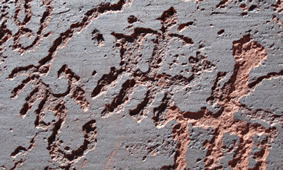
Figure 17: Detail of Panel BAF-004Bsw showing the ‘rider’ (height 11 cm);
a second zoomorph and the unpatinated grooves possibly mimicking the earlier ‘rider’ figure.
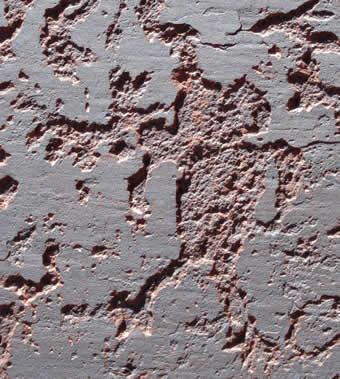
Figure 18: Detail of Panel BAF-004Bsw showing the ‘bulbous’
anthropomorph and one of the zoomorphs. Height of the anthropomorph is 18 cm.
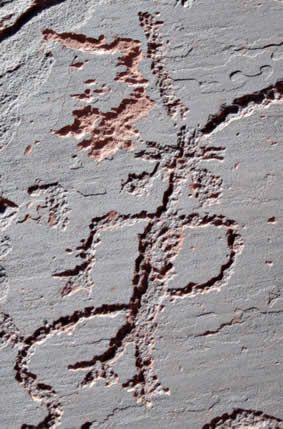
Figure 19: Detail of Panel BAF-004Bsw showing the ‘slender’ anthropomorph
with headgear and eardecoration. Height of the anthropomorph is 24 cm.
Panel BAF-004C
In front of and directly west of Boulder B is the much smaller Boulder C. It has an irregular and much damaged, steeply southwest sloping surface with only small patinated parts. One of these small parts has some grooves and markings. On a larger un-patinated part to the north is a group of grooves including a rough circle and some irregular ovals. Near the top - on unpatinated rock - are a small depression and a groove that could have been a zoomorph.
Site BAF-005
About 145 m SE of Site 4 and overlooking the Río de Suri to the south and west is a high, rocky hillock with a large, partially patinated outcrop at the summit (Figure 14). It is comparable in situation as site BAF-001 and the whole outcrop slopes to the ESE. The petroglyphs mainly occur on the patinated areas. Although flat, the outcrop is much damaged by exfoliation. As there are no distinctly separated panels I decided to group the images from north so south.
The Northern Part. Very near the extreme northern edge and dangerously close to the escarpment is a shield-like design topped by a cross or stylised anthropomorph. The design has been partially damaged by erosion and weathering but faint lines of the design are still visible in the eroded part (as well as some other grooves). On the slightly lower part of this outcrop and south of the ‘shield’ are the faint remains of two short, curved grooves and acircular area of pecking. Further south, on a rough but deeply patinated area, are a circle with central dot; a small horseshoe groove and a random pattern of long grooves. Un-patinated areas at lower level show areas of apparently random pecking.
The Southern Part. This part is heavily damaged by exfoliation; large parts of the original surface seem to be missing (rock art robbery?). There is also a number of graffiti (like a large profile face that destroys ancient petroglyphs and some initials. The most interesting collection of petroglyphs is found on the central part (Figure 20). It is dominated by the large image (36 by 17 cm) of an outlined lizard (mP and aD), apparently viewed from above (on its ‘back’ is a cupule). It has four outstretched legs with three digits at each leg (one of the paws is naturally damaged). The triangular head has no facial features. Below the lizard is an amorphous pattern made of very wide but closely packed grooves (3 cm wide - cP and dD), while to the left of the lizard is a (rect)angular groove system (mP and aD) that continues as a curvilinear pattern. Further south is a row of four paired, fully pecked footprints (about 8 cm in length) each with only three digits. In front of each right foot seems to be a single handprint. All footprints and handprints appear in the inverted position, i.e. as if ‘walking’ down the slope. The topmost footprint seems to superimpose a much smaller lizard; its triangular head being similar to the larger lizard (Figure 21). Near the footprints are some serpentine and other grooves and pecked areas, a boomerang-shape and a small ‘circle’ enclosing five small dots. To the north of the bigger lizard are several crudely pecked grooves, a small rectangular shield-like pattern, a rake-pattern, a small circle and other groove patterns. Near the more recently pecked head-graffiti is a large equal-armed cross.
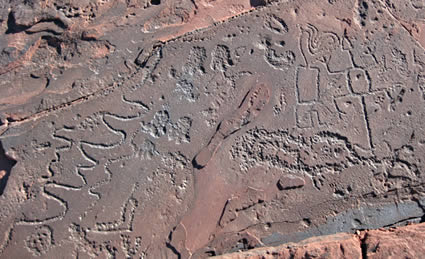
Figure 20: Detail of Panel BAF-005 showing the central section of the southern outcrop part showing the larger
lizard (length 36 cm), the crudely pecked groove and the row of footprints.
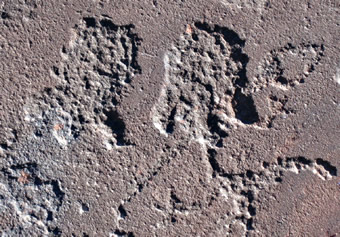
Figure 21: Detail of Panel BAF-005 showing two of the footprints,
one (7 cm in length) superimposing a smaller lizard.
Site BAF-006
On the south side of the dry riverbed of the Río de Suri is an isolated outcrop stack roughly 40 m SSE of Site 5 (Figure 14). The foot of this rocky hillock is worn smooth by water running through the narrow part between BAF-006 and BAF-005. There are two petroglyph panels at this northern edge of the outcrop stack.
Panel BAF-006A
Seen from the riverbed, the second ridge of worn outcrop bears a large collection of petroglyphs; at least 28 individual images or grooves or areas of pecking have been recorded on this occasion. The slightly undulating surface slopes to the ESE. Near the west end of the petroglyph group are two crudely executed rectangles each enclosing parallel, vertical grooves. From the top runs of each rectangle a single groove forming a spade-like object (Figure 22). To the left of the larger ‘spade’ is a groove (mP and aD) possibly forming an unfinished third ‘spade’. The larger ‘spade’ (mP and aD) is superimposed by a complex of two incised rectangles. The larger rectangle (possibly a garment covering the legs) shows two very small feet that are superimposed upon the larger ‘spade’. The smaller top rectangle (possibly a garment covering the thorax) has two small grooves forming short arms. On top of the smaller rectangle is an incised head with eyes, nose and mouth. The smaller ‘spade’ (mP and aD) just superimposes a small part (tail and back) of a zoomorphic petroglyph to its right. It is the outlined (fP and sD) profile depiction of a quadruped. It has four short and straight grooves that represent the legs. The head-area is indistinct and concealed by other adjacent grooves and areas of pecking. The rather bulbous body shows internal markings but it is uncertain if these are actually part of the zoomorph. It may be phallic, but this again is uncertain. Below this zoomorph is a much smaller second outlined zoomorph (fP and sD) with short grooves for legs and tail (Figure 23). The head area is better preserved and seems to have an eye. Further below is a serpentine groove pattern with appendages (the legs of a zoomorph?). Near the top end a cluster of grooves and pecked areas comprises a triangle (looking like a lizard’s head), a circle, a T-J-shape and an uncertain match-stick zoomorph. East of the smaller ‘spade’ is a much large rectangle filled with three parallel grooves; horizontally arranged this time. It may be another ‘spade’. It is touched by a large, possible match-stick anthropomorph. Further east are a circle and a groove forming the figure of ‘10’ and a faint ladder design. Still further east and horizontally arranged just below the edge is another concentration of petroglyphs. East of an M-shaped groove are two possible matchstick anthropomorphs, the larger of which may be interpreted as an archer. The smaller example is more damaged. Both figures may be phallic, or at least have a pecked area between the ‘legs’. Further east are two figures (one with a large ‘hand with three digits’) that could be biomorphs (recumbent anthropomorphs?) and a faint rectangle with appended grooves possibly representing a frontally depicted, outlined anthropomorph. Finally there is a serpentine groove, a possible circle, an L-shaped groove and a triangle-circle combination.
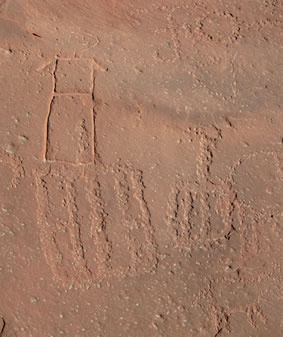
Figure 22: Detail of Panel BAF-006A showing the more recent anthropomorph superimposing the larger of the
two adjacent ‘spades’; and the smaller ‘spade’ (26 cm in height) superimposing the rear of an outlined
zoomorph. The smaller zoomorph (19 cm in length) is visible in the lower right-hand corner.
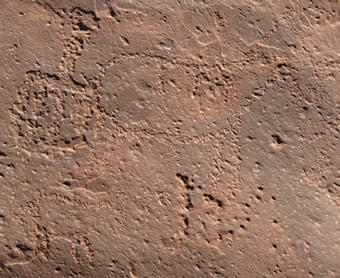
Figure 23: Detail of Panel BAF-006A showing the two outline and pecked zoomorphs.
Panel BAF-006B
Somewhat higher is a deeply patinated outcrop bit (sloping to the ESE) with a small, patinated serpentine groove and a much smaller, slightly curved groove that is almost un-patinated.
Site BAF-007
About 20 m SSE of panel BAF-006B and at a higher elevation is the west facing cliff face of the aforementioned outcrop stack (Figure 14). It has a number of outcrop panels that bear petroglyphs and at the bottom of cliff is a large boulder with petroglyphs. At the time of the survey all panels were in the shade and consequently it was impossible to identify all petroglyphs with accuracy.
Panel BAF-007A
This large boulder has an almost vertical SSW facing panel with a large collection of petroglyphs. Unfortunately the lighting was unfavourable and most patterns were largely unidentifiable. Near the extreme right end is a rectangle with six short, parallel rays from the top and several indistinct internal markings. It may be a mask or face petroglyph. A second rectangle with parallel rays and internal markings is found a short distance to the left. The largest part of the panel is covered with many grooves, circles and other patterns. Near the upper edge is a groove enclosing a stepped pattern that in turn encloses a circle with central dot. There may be petroglyphs on the other panels of this boulder.
Panel BAF-007B1
On a west facing, vertical outcrop panel east of Boulder BAF-007A is a central patinated area with the outline figure (32 cm in height) of a frontally depicted anthropomorph with drooping arms ending in badly executed hands with three digits (Figure 24). On its thorax is a semicircle from which a rectangle emerges. The head is largely executed on an un-patinated area and is almost invisible. It seems to be formed by a rectangle without a neck. Facial features and ears may be present.
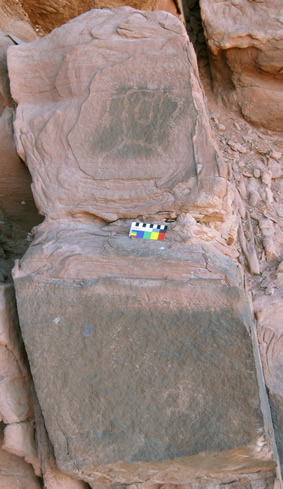
Figure 24: The petroglyphs on Panels BAF-007B1 (upper panel)
and BAF-007B2. The upper anthropomorph is 32 cm tall.
Panel BAF-007B2
Just below panel BAF-007B1 is another panel with the fully pecked figure of a biomorph (10 cm in height). It may be an anthropomorph with drooping arms, but there are no digits shown (Figure 24). The circular, outlined head may include two eyes. There are faint but recent graffiti (initials?) on this panel.
Panel BAF-007C-s
High above BAF-007A and in an inaccessible position (no scales could be taken) are two patinated outcrop panels shaped like an opened book. On the right ‘page’ no petroglyphs could be detected, but if present after all, they have been patinated beyond recognition under the poor lighting conditions. The left panel has at least eight images/patterns. Near the lower end is at least one match-stick zoomorph with four legs and a downward turned tail (probably a camelid). Higher up are a long straight groove with rays at the upper end, a short straight groove with three shorter grooves at each side and a pecked triangle at the lower end (a centipede?), a circle with short groove (a ‘spade’?), a serpentine groove possibly ending in an oval (a snake?), another (possible) match-stick zoomorph with three legs and a tail, and a zigzag groove. Much fainter are a square (?) with internal cross (?), some other grooves and a possible zoomorph.
Site BAF-008
This site is located about 240 m SW of Site 7 (Figure 25) in a rather isolated position west of the main concentration of rock art sites at Banda Florida. It is a large boulder among many others with a (partially) deeply patinated, smooth surface that gently slopes to the SE. At the time of surveying this site the lighting conditions were not favourable. Although many of the markings probably are recent (the graffiti include several scratched and pecked initials - ‘Eva’ being popular - and the pecked image of a car), some of the images are worthwhile describing. Most prominent are three large, fully pecked human handprints (Figure 26); a system of straight grooves that may represent a plant or tree and one possible match-stick zoomorph (executed in an un-patinated area). Also interesting (but of somewhat doubtful origin) are the depictions of two pecked birds, both shown in profile (Figure 27). Their bodies are outlined as is the head of the smaller bird. Both birds probably represent the Andean ostrich. Interestingly, the large bird has been superimposed upon a fully scratched biomorph. Those scratches are very faint and much patinated and also because of the superimposed pecked bird it is uncertain if the biomorph is also a bird; it may as well be a camelid. Near the smaller pecked bird is a simple Christian Cross. There are more (extremely faint or doubtful) markings on this surface that could be prehistoric. However, the overall ‘tidy’ impression (disregarding the ugly graffiti) of the few markings on this surface differs much from the ‘chaotic’ impact of the imagery on most of the other panels at Banda Florida.
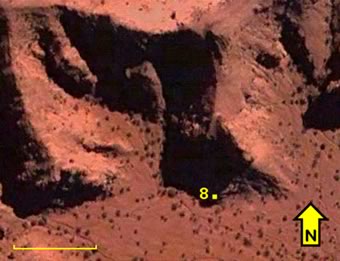
Figure 25: Location of the individual panels at site BAF-008. Based on Google Earth. Scale is 50 m.
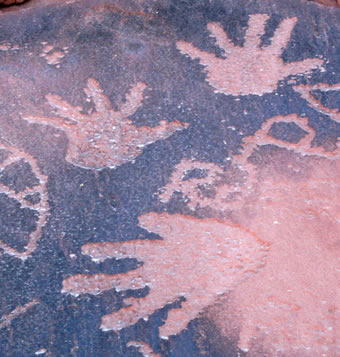
Figure 26: Detail of Panel BAF-008 showing the three fully pecked
handprints and some of the graffiti. The hands are almost life-size.
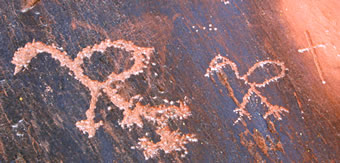
Figure 27: Detail of Panel BAF-008 showing the two outlined and pecked bird
(the larger superimposing a scratched zoomorph) and a Christian Cross. No scale available.
CONCLUSIONS
Although the images at Banda Florida have been ascribed to both the Cienaga Culture (A.D 200 to 500) and the Aguada Culture (A.D. 500 to 900), the precise origin is largely still obscure. It is clear however that several phases of petroglyph production have occurred. First of all, several instances of superimposition point to a layered structure. Fine examples are found on BAF-001A, where a long deep groove intersects an outlined cross, and on BAF-005, where a fully pecked footprint almost completely covers a small lizard. There are also striking differences in patination on one panel. Although many images have been fully patinated and cannot be distinguished from the surrounding natural rock, others appear almost un-patinated (and seem to superimpose earlier images). The strongest contrasts in patination occur on BAF-004B-sw. Also the techniques of petroglyph production on one panel are much different in several cases. A fine example occurs on Panel BAF-005 where the tail of the delicately pecked lizard is almost superimposed by a very crudely pecked groove system. The incised zoomorphs on BAF-001C seem to be rather recent. Finally there are marked differences in style. Most evident are the much differing shapes of the match-stick zoomorphs on BAF- 001A and the two outlined zoomorphs on BAF-006A.
Iconographic differences
There are some marked differences between the imagery of Banda Florida and the other rock art sites in the same general area. Although several zoomorphs at Banda Florida seem to represent camelids, there are no camelid tracks at Banda Florida and none of the legs of the alleged camelid petroglyphs has cloven hoofs. Contrary, on Boulder PLQ-001 at Palancho are two match-stick camelids with four legs, each featuring double hoofs, while next to these are four groups of camelid tracks. Also the typical arrangement of rows of zoomorphs seems to be missing at Banda Florida, while several examples of rows of camelids occur at Talampaya, for example on Boulders TAL-A-003 and TAL-A-013, (TAL-A encompasses the rock art concentration at Puerto de Talampaya).
Especially the Aguada Culture is said to be associated with feline symbolism (Callegari 2001). Yet, Banda Florida has no imagery related to the feline. Interestingly, other rock art sites in the region occasionally have feline spoor, but no representations of the feline proper. In her study of animal tracks in Patagonia Carden (2009: 34) disregards circular markings with less or more than four toes as true feline tracks. However, I admit markings with an arc of three or five, even six, toes also to represent feline tracks, because Andean art rarely is concerned with the correct number of digits. A fine example occurs at the Las Planchadas site (Province of Salta) where the legs of a painted image of a lizard have seven to eight digits (Podestá et al 2005: Plate 25). A rock panel near Antofagasta de la Sierra features a row of feline spoor with six toes, while the paws of a profile feline petroglyph on the same panel have been replaced by ‘twisted perspective’ spoor with up to seven toes. Much further NW, on panel AP3-004A at Alto de Pitis in the Majes Valley of southern Peru is a large petroglyph of a laterally depicted feline with frontal face and two legs with five large cupules for toes at the end of each leg.
On the much damaged Boulder PLQ-003 at Palancho is an outlined ‘puma’ spoor of one large circle with an arc of four smaller circles (outlined and fully pecked soles with up to six cupules for toes also occur at the Los Pizarrones - TAL-E - site at Talampaya). On outcrop PLQ-047 are six fully pecked examples of feline spoor, each with five toes. Also several rock art panels at Talampaya bear feline spoor. Especially Boulder TAL-B-001 is interesting as a vertical row of five feline spoor, all with five toes, ‘climbs’ the vertical surface of the panel. Puma spoor recently made in the sands of the area were noticed by us during our visit. One panel at Ischigualasto (Podestá & Rolandi 2001: Fig. 5) features feline spoor. Other petroglyphs depicting feline spoor occur at Los Colorados (Pía Falchi 2008) and - much further away - at sites like Campo de las Tobas (Podestá et al 2005: Plate 5) and Peñas Coloradas (Aschero 1999: 123), both near Antofagasta de la Sierra and 372 km NNE of Banda Florida. Examples with arcs of three to six toes appear on a boulder from Alero El Galpón in the Santa Cruz province (Carden 2009: Fig. 4), 1975 km south of Banda Florida. It proves that a very large area east of the Andean Watershed has feline spoor, while these tracks are absent at Banda Florida.
What is also remarkable is that Banda Florida has also no bird/ostrich tracks, while even nearby Anchumbil may have two painted (inverted) bird tracks (on Panel ANC-007). Very dense concentrations of large abraded ostrich spoor occur at Palancho PLQ-010 and PLQ-015 together with tool sharpening grooves, human footprints and ‘puma’ spoor. Also at Talampaya (especially on Panel TAL-E-001), Los Colorados, Parque Diaguita, El Chiflón and possibly at the Piedra Pintada near Valle Fertil bird spoor have been recorded. Three boulders at Cerro el Toro to the north of Banda Florida also have bird tracks (TOR-007, TOR-008 and TOR-011). Series of bird tracks are also known from the enormous horizontal outcrop at Campo de las Tobas near Antofagasta de la Sierra (Podestá et al 2005: Plate 5). Yet, some motifs at Banda Florida might represent bird tracks, like the M-shaped design on Panel BAF- 004Bsw.
Interestingly, animal tracks (especially of birds and felines) are rather common in the rock art repertoire of the eastern side of the Continental Divide, whereas on the western side these are very rare and - at most sites - even absent. Two notable exceptions are the concentrations of bird tracks and human feet of the Ofragía / Cerro Blanco group in the Codpa Valley of northern Chile and the (often paired) human feet at the Santa Rita rock art site in the Chao Valley of northern Peru. Surprisingly, feline tracks seem to be completely absent in the rock art of the western area, north of the Codpa Valley in Chile.
Iconographic similarities
Conveniently ignoring the authenticity of the three large handprints on Boulder BAF-008, it is certain that the footprints on Panels BAF-001B, BAF-001C and BAF-005 are prehistoric. These footprints are similar in style to those found at Talampaya, Palancho and Los Colorados. On Panel DIA-Z-057 is a human handprint, possibly without a thumb. Interestingly, most - if not all - footprints in the region have been vertically executed as if walking up-slope (toes at the upper parts). The footprints on Panel BAF-005 however seem to be intentionally placed upside-down. Also, they seem to be less ancient, as one footprint superimposes a small lizard petroglyph.
Bird imagery is rare at Banda Florida. Although no isolated bird tracks occur at Banda Florida, there are a few petroglyphs that may express bird-symbolism. Several grooves notably have ‘three-digit’ features that give the impression to represent bird legs (for example on BAF-001D). Two complex designs on Boulder TAL-A-008 at Talampaya seem to represent ‘biomorphs’, each featuring one groove (a leg?) ending in the ‘three digits’ feature. It is not unusual to find the ‘three-digit’ feature ‘unexpectedly’ associated with other designs.For instance, a spiral ending in a ‘three digits’ feature (a bird track?) is found on Boulder DIA-Z-054 at Parque Diaguita, while Boulders DIA-W-017, DIA-Z-051 and DIA-Z-056 feature large bird tracks.
Another feature at Banda Florida is special. Panels BAF-004B-sw and BAF-003A seem to involve zoomorphs mounted with a rider. These zoomorphs may be camelids, although Andean camelids are not generally capable to carry adults (at least not for long distances). Thus these configurations may represent either a zoomorph carrying a child or some kind of symbolic imagery. Interestingly, Panel TAL-D-001 at the Jardin Botánico at Talampaya also features a zoomorph with a ‘rider’.
Spirals and (concentric) circles are a rather common feature of Banda Florida and also occur at most other sites in the ‘neighbourhood’, like Palancho, Parque Diaguita and Cerro el Toro. However, Banda Florida features two types of ‘spirals’ that are exceptional, though not unique. On Panel BAF-001D are several long, straight grooves that have a small spiral at one or at both ends. Similar patterns occur at Los Colorados, 132 km SE of Banda Florida, and possibly on a boulder now outside the local museum at the village of Campanas (this boulder probably has been transported from Parque Diaguita, 7 km NW of Campanas and 102 km NE of Banda Florida). Most interesting are the three joined S-shaped ‘spirals’ on Panel BAF- 004Bne. Remarkably, two identical sets of joined S-shapes are found on Boulders PLQ-033 and adjacent PLQ-034 at Palancho, 118 km ESE of Banda Florida.
There are two stepped patterns at Banda Florida. On Boulder BAF-003A is a double-unit (pyramid-shaped) stepped pattern while on Boulder BAF-007A is an imperfect quadruple (diamond-shaped) stepped pattern. Stepped patterns are very common on textiles and ceramics throughout the Andes. The stepped pattern is very old and probably originated somewhere on the northern Peruvian coast during the Initial Period (2000 to 1000 B.C.). Surprisingly, stepped patterns are rare in the rock art of the Andes (Van Hoek 2004), but occur relatively more frequently in the rock art repertoire of Argentina. Stepped patterns have been recorded at Palancho PLQ-036, PLQ-037 and PLQ-047. Also Boulder DIA-W-015 at Parque Diaguita features a very clear stepped pattern. Possible examples of the double-unit occur on Boulders DIA-W-004 and DIA-W-009. At Talampaya several stepped designs have been documented. On panel TAL-A-008 is a simple, reduced version of the stepped pattern, possibly representing a stylised feline. Boulder TAL-A-011 may have a complicated stepped pattern-spiral combination. On the west panel of TAL-A-013 - the largest boulder in this - group is a delicately executed (incised) complex configuration of four stepped patterns. On Boulder TAL-D-001 is a possible single unit with spiral attached. A concentric (double-line) double-unit has been recorded on Boulder TAL-F-001 while a smaller, single-line quadruple unit is hovering over the larger example. A little further south is the National Park of Ischigualasto where the large boulder of Agua de Peña features a double unit stepped pattern, crowned by an outlined cross (Podestá & Rolandi 2001: Fig. 5). The southernmost examples of the stepped pattern are found at Huechahue (Vega n.d.) and at Lago Lácar (Reynoso n.d.), both 1195 km SSW of Talampaya. Interestingly, stepped patterns also frequently occur in the rock art of Northern America, making it a design with a strikingly wide dispersal.
Another symbol with an enormously wide distribution is the outlined cross. Examples have been recorded by me at Banda Florida, but also on a boulder in Box Canyon near Phoenix, Arizona, U.S.A., as well as on a cliff on the island of Bonaire. Strikingly, the distance between the northernmost examples in North America and the southernmost (imperfect) example in South America (at Guaiquivilo in Chile; Cofré Muñoz 2007) is approximately 10.300 km. But there is more. There is also a striking concentration of outlined crosses in New Caledonia, an island on the other side of the Pacific Ocean. The distance between the easternmost examples that I have seen - at Palancho, La Rioja - and the westernmost examples reported by Coffman (2002: Fig. 47) in New Caledonia is more than 12.000 km! However, despite the morphological similarities I do not wish to claim the same symbolic content for those most distant symbols.
Again the outlined cross is rather rare in the rock art of the Andes, but it is surprisingly ‘common’ in Argentina and - across the Continental Divide - especially in Central Chile (Sánchez 2008). Especially Banda Florida is rich in outlined cross symbols. No less than twelve examples on four panels have been recorded by me. What is also relevant that all examples at Banda Florida are much weathered and in one case (on Panel BAF-001A) superimposed by a deep groove (Figure 6). This may point to great antiquity of the symbol in the Bermejo Basin.
At least six outlined crosses (one unfinished) have been recorded by me on Boulder TAL-A-013; one on Boulder TAL-A-016 and one on the cliff face of TAL-E-001 at Talampaya. Especially the examples on Boulder TAL-A-013 seem to be older than several of the other images on this rock (most petroglyphs are located at such a high position that they are inaccessible from ground level). Also at Ischigualasto an outlined cross has been reported (Podestá & Rolandi 2001: Fig. 5), while also Panels PLQ-018 and PLQ-032 and PLQ-047 at Palancho feature one outlined cross each. Boulders DIA-Z-053 and DIA-W-021 at Parque Diaguita show an outlined cross as well. Further north, near Laguna Blanca, is the petroglyph site of Portrerito with at least two examples of the outlined cross and one more complex example, as well as human footprints, bird tracks and feline spoor (Podestá et al 2005: Plate 8). Further north, on the immense outcrop plateau of Campo de las Tobas near Antofagasta de la Sierra is at least one concentric outlined cross. A single (vandalised) outlined cross is found nearby on the vertical cliff at Peñas Coloradas.
Because the rock art repertoire of Banda Florida has much in common with other rock art sites in the area, like Talampaya, Los Colorados and Palancho, it probably is roughly contemporary with those sites. The rock art at Palancho has been ascribed to the Formative or Early Agricultural Ceramic Period (ca. 500 B.C. to A.D. 500) by Maria Mercedes Podestá (2005: 72), while Talampaya rock art is said to date from the Middle Period (A.D. 500 to 900) (2005: 112). The rock art repertoire of Cerro el Toro to the north of Banda Florida has been ascribed to the Aguada Culture by Adriana Callegari, but the C14-dates from this site are more modern and vary between A.D. 1190 and 1320 (2001: 25). However, it is a mistake to indiscriminately link rock art with other archaeological remains in the same area. The rock art may have been produced in a completely different period. In conclusion it is safe to ascribe the rock art at Banda Florida to have largely been produced during the Early Agricultural Ceramic Period and the Middle Period (500 B.C. to A.D. 900). Probably the Aguada Culture is also responsible for the imagery at Banda Florida, although local influences cannot be ruled out.
Acknowledgements
We are most grateful to our guide, Jesús from Villa Union, who drove us to Banda Florida, Anchumbil and Cerro el Toro and indicated several of the rock art panels to us. Without his help we would never have been able to locate all those rock art sites. I am also indebted to my wife Elles for her help and encouragement in the field and at home.
All photographs have been taken by Maarten and Elles van Hoek. These pictures represent a small fraction of a large collection of photographs taken at Banda Florida. All photographs have been reduced considerably and some have been digitally enhanced. All maps are based on Google Earth, except for Figure 1 which is based on Fig. 1 in Arcucci et al 2004.

—¿Preguntas,
comentarios? escriba a: rupestreweb@yahoogroups.com—
Cómo
citar este artículo:
van Hoek, Maarten. Banda Florida. An Overview of a Rock Art Site in La Rioja,
Argentina. En Rupestreweb, http://www.rupestreweb.info/bandaflorida.html
2011
BIBLIOGRAPHY
ARCUCCI, A. B; C. A. MARSICANO & A. T. CASELLI. 2004. Tetrapod association and palaeoenvironment of the Los Colorados Formation (Argentina): a significant sample from Western Gondwana at the end of the Triassic. In: Geobios 37 (2004) pp 557–568.
ASCHERO, C. A. 1999. Rock art of the Puna desert and Northwestern Argentina. In: Rock art in the Andes of Capricorn. Museo Chileno de Arte Precolombino, Santiago de Chile.
COFRÉ MUÑOZ C. 2007: http://petroglifosestiloguaiquivilo.blogspot.com/
CALLEGARI, A. 2001. Los grabados del Rincón del Toro. El paisaje e su relación con el sistema iconográfico Aguada. Boletín del Museu Chileno de Arte Precolombino. No. 8. pp 21 - 33. Santiago de Chile.
CARDEN, N. 2009. Prints on the rocks: A study of the track representations from Piedra Museo locality (Southern Patagonia). Rock Art Research. Vol. 26.1; pp 29 - 42. Melbourne.
COFFMAN. R. J. 2002. Voyagers of the Pacific: Rock art and the Austronesian dispersal. Rock Art Research. Vol. 19.1; pp 41-67. Melbourne.
SÁNCHEZ, P. D. 2008. El símbolo de Venus en el arte rupestre de Perú, Chile y norte de Argentina. In: Rupestreweb: http://rupestreweb.info/venus2.html (Ponencia leída en el II SIMPOSIO NACIONAL DE ARTE RUPESTRE - 2006. Trujillo, Perú).
PÍA FALCHI, M. 2008. Los Colorados (Provincia de La Rioja). Un caso de planificacion interpretativa. Comechingonia Virtual - Revista Electrónica de Arqueología. Número 2: 110- 128.
PODESTÁ, M. M. & D. S. ROLANDI & M. S. PROAÑO. 2005. El Arte Rupestre de Argentina Indígina - Noroeste. GAC, Buenos Aires.
PODESTÁ, M. M. & D. S. ROLANDI. 2001. Marcas en el Desierto. Arrieros en Ischigualasto (San Juan, Argentina). SIARB 15. pp 63-73. La Paz.
REYNOSO, M. n.d. Arte Rupestre; Un enorme patrimonio.
http://www.patagonia.com.ar/neuquen/alumine/rupestreslaslajas.php
VAN HOEK, M. 2004. The stepped-fret motif in American rock art: an attempt at tracing origin and meaning. The Artifact. Volume 42. pp 75-91. El Paso Archaeological Society. El Paso, Texas.
VEGA, T. n.d. El Arte Rupestre en la Provincia de Neuquén. Un Aporte Metodológico.
http://www.rupestre.com.ar/articulos/rup06.htm
[Rupestreweb Inicio] [Introducción] [Artículos]
[Noticias] [Mapa] [Investigadores] [Publique] |
